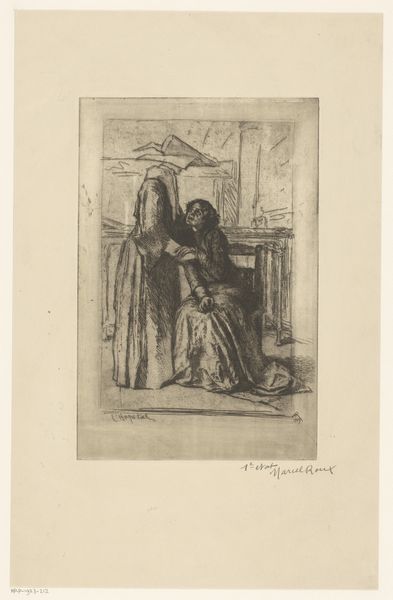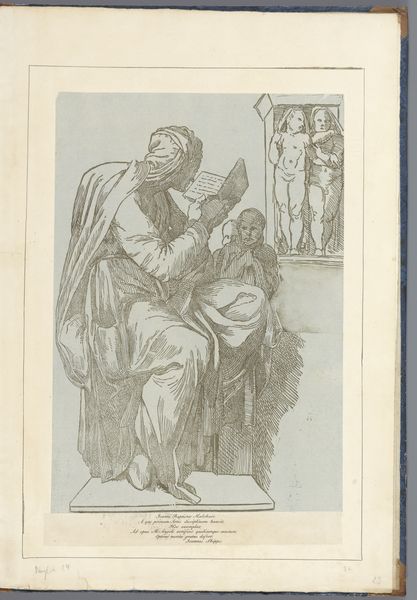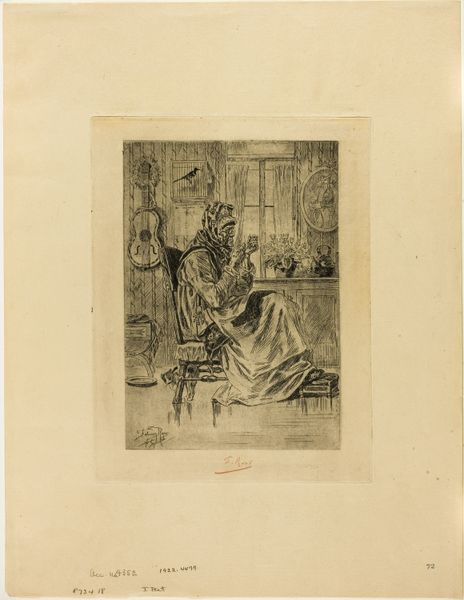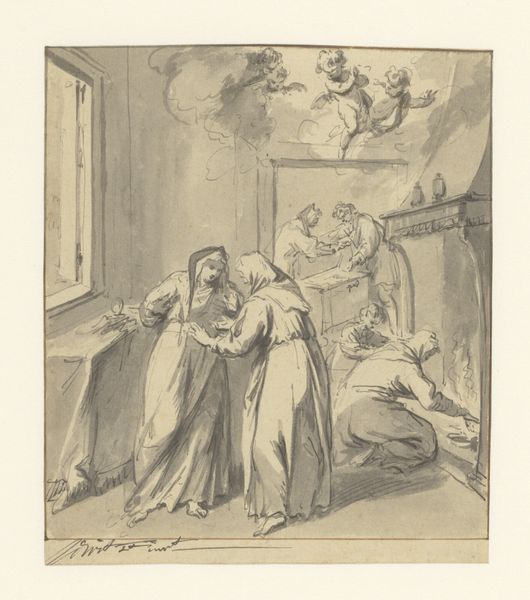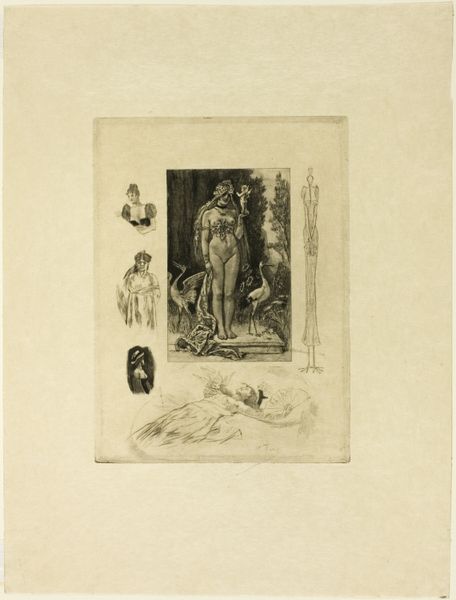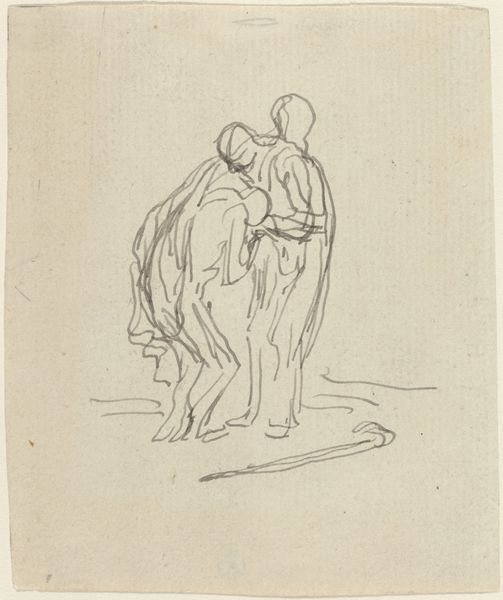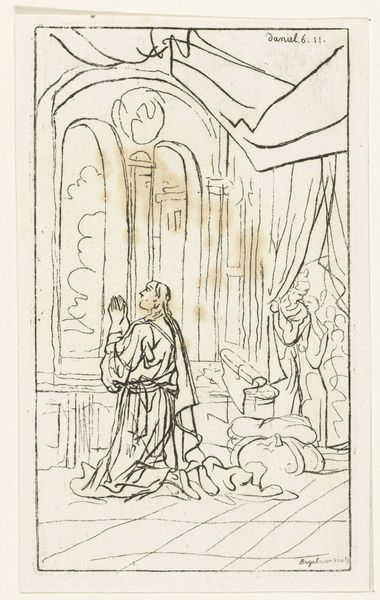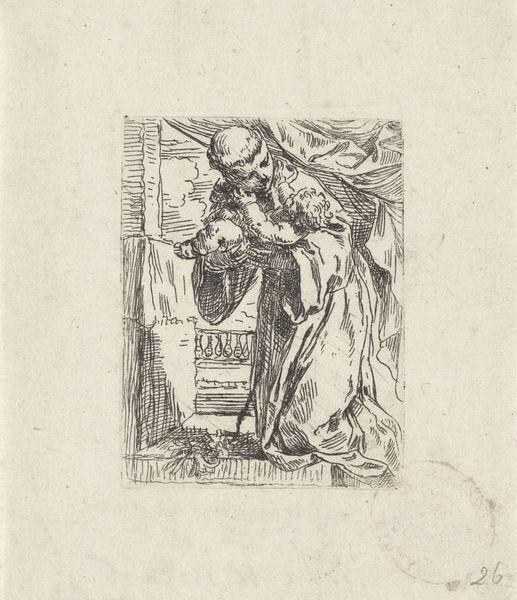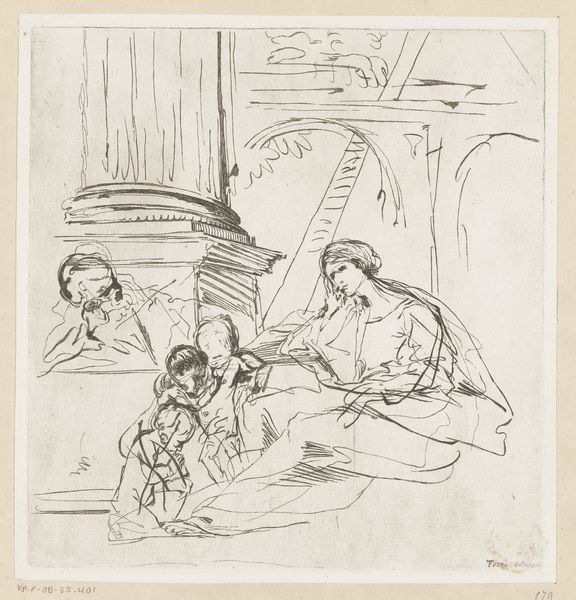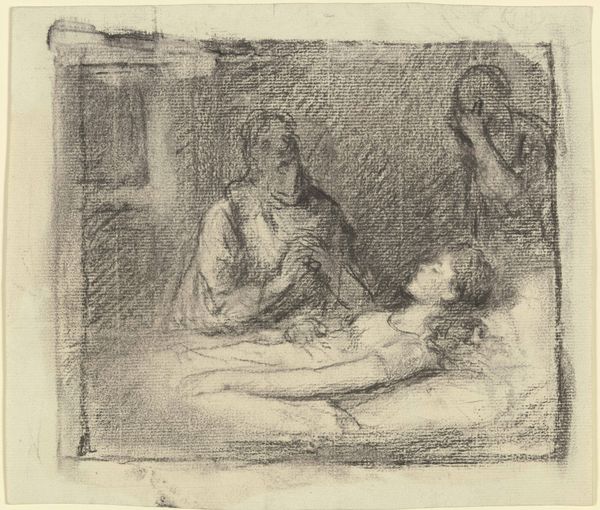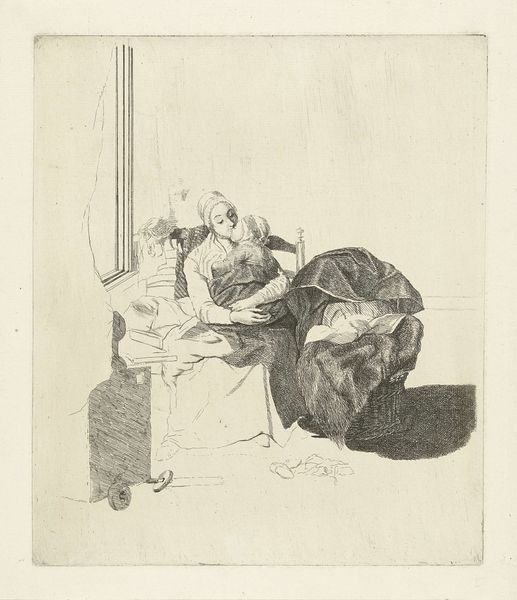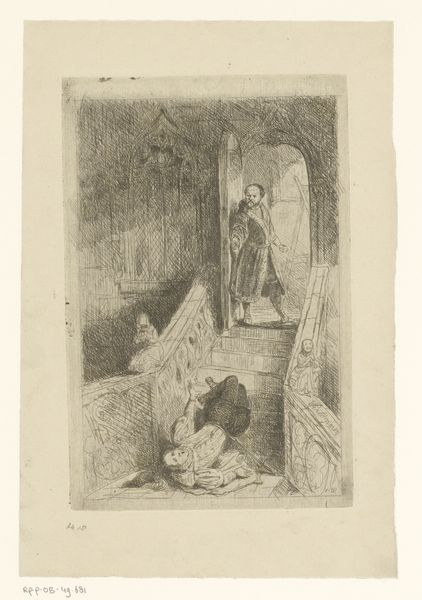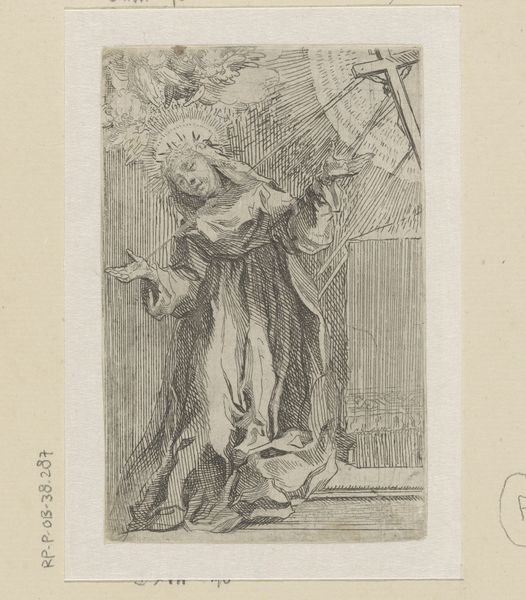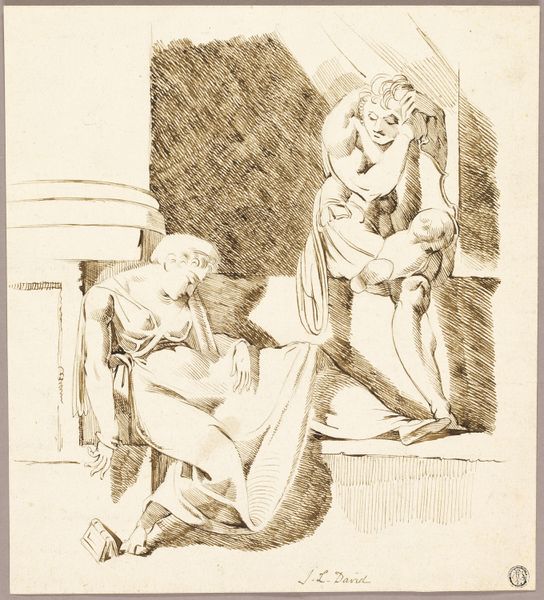
Twee monniken kijkend naar een man die op de grond ligt 1836 - 1912
0:00
0:00
drawing, ink, pen
#
drawing
#
comic strip sketch
#
imaginative character sketch
#
light pencil work
#
narrative-art
#
figuration
#
personal sketchbook
#
ink
#
idea generation sketch
#
sketchwork
#
ink drawing experimentation
#
pen-ink sketch
#
sketchbook drawing
#
pen
#
storyboard and sketchbook work
Dimensions: height 85 mm, width 77 mm
Copyright: Rijks Museum: Open Domain
Curator: Right now we’re looking at “Twee monniken kijkend naar een man die op de grond ligt”, or "Two Monks Looking at a Man Lying on the Ground," a pen and ink drawing by Isaac Weissenbruch created sometime between 1836 and 1912. It's currently part of the Rijksmuseum's collection. What’s your first reaction to it? Editor: It feels theatrical, almost like a still from a play. The stark simplicity of the line work lends a kind of desperate gravity. There’s something deeply unsettling about the power dynamic illustrated here. Curator: I get that. There's a raw, unpolished quality to the sketch that really grabs you. It's like a quick glimpse into Weissenbruch's mind. What’s striking to me is the ambiguity – what’s the relationship between these figures? Is it a scene of suffering, judgement, or maybe something else entirely? It's open to interpretation, like a dream waiting to be deciphered. Editor: Exactly. I think that ambiguity speaks volumes, and I’d argue that is precisely the point. Here we see this stark contrast of authority and vulnerability and its inherent instability – a microcosm of social hierarchies. The gaze of the monks, coupled with the prostrate man, immediately raises questions about class, faith, and marginalization. Is this absolution? Is it condemnation? Curator: You’re making me see it differently! The narrative definitely complicates the scene, making you question assumptions about morality and compassion. Editor: Absolutely, and Weissenbruch isn't just showing us a scene. The sketch compels us to consider the weight of silence and the many unspoken words surrounding this scene. And look at the economy of the strokes in the sketch – it shows how art can become a powerful means for examining these inequalities and calling out the complexities of our moral obligations towards each other. It feels relevant, doesn’t it? Curator: Definitely, it sparks introspection. Like a riddle hanging in the air, daring you to provide an answer, if there is one. Looking closely, it makes me think how powerful a simple pen stroke can be. It’s so deceptively spare and open. Editor: Yes! This encounter remains shrouded in so many unsettling yet necessary questions, questions we should definitely be asking even today. Curator: Absolutely, a perfect reflection of our present times, don’t you think?
Comments
No comments
Be the first to comment and join the conversation on the ultimate creative platform.
